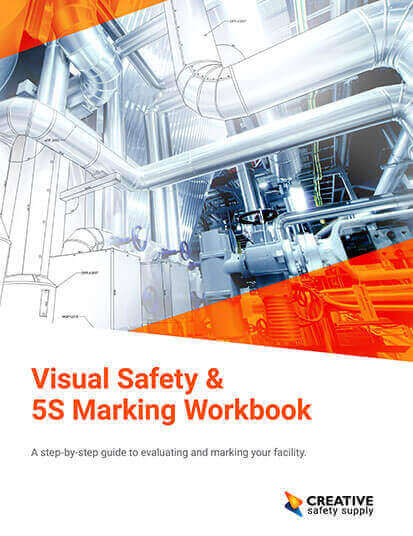
Within an industrial warehouse setting, thorough safety measures are paramount in order to prevent accidents. Facility marking utilizes visual cues which guide both employees and visitors through the facility in a more orderly manner, not only enhancing safety, but also efficiency and productivity. In this article, we discuss some examples of facility markings that can be used to prevent accidents within warehouses.
Floor markings
Being the most commonly used type of facility marking, floor markings are a non-invasive way of providing guidance around a site to both pedestrians and vehicle operators. By utilizing floor space, they are unmissable and thus help reduce the risk of collisions. Using bright and defined markings will help employees navigate the warehouse safely, separating pedestrian areas from the routes used by vehicles by using different colored markings. Loading areas are often marked out separately to warn pedestrians to keep the space clear and to be aware of moving vehicles during unloading hours. As well as using floor markings to define routes, they are effective on sites where there may be uneven surfaces or changes in elevation, using brightly colored hazard stripes to draw attention.
Evacuation routes
Every business owner is responsible for having an emergency evacuation process in place to prepare for unexpected occurrences such as fires or extreme weather conditions. Emergency exit routes should be marked out with directional arrows and sufficient lighting to ensure people can follow the guidance towards emergency exits. They should also make emergency assembly points easy to locate, ensuring all people on site can gather at a safe distance to undertake a head count.
Color coded markings
By utilizing standardized color codes, important information can be visually communicated without the need for signage. There are certain colors which can show a hazard so employees can be instantly made aware of any upcoming dangers. For example, red is used to portray fire equipment or stop, yellow is used to show caution, and green can be used to indicate the location of first aid and safety equipment. As well as these standardized color codes, a business can create their own internal system to organize inventory, speeding up the process of locating goods and maximizing productivity.
Safety signs
Using visual forms of communication can help improve safety measures by conveying key information through well-known and recognized icons and graphics. For example, no entry signs prevent unauthorized access to areas which are restricted for the safety of the public. Danger icons are also commonly used within safety signs, being crucial in the presence of hazards such as high-voltage equipment, flammable materials, or chemical storage.
Vehicle and pedestrian routes
Clearly marking out vehicle lanes and pedestrian walkways can help to prevent accidents by keeping pedestrians away from moving traffic. Utilizing high-visibility facility markings, as well as signage or barriers, maximizes safety measures and prevents the risk of collision. It is also important to add stop signs, give way signs, or pedestrian crosswalks in areas where vehicles and pedestrians may overlap or where intersections may require drivers to be alert.
Similar Questions
- How does Facility Marking Improve Safety Awareness and Navigation?
- What are the Best Facility Marking Techniques?
- What is Facility Marking?
- How does proper Facility Marking help create a more Safe and Visual Workplace?
- What are the Benefits and Best Practices of using Color-Coding for labels and signs in Facility Marking?
- What are the Benefits of Floor Marking Tape for Safety and Productivity?
- What are the Best Practices for Installing and Maintaining Facility Marking Products?

